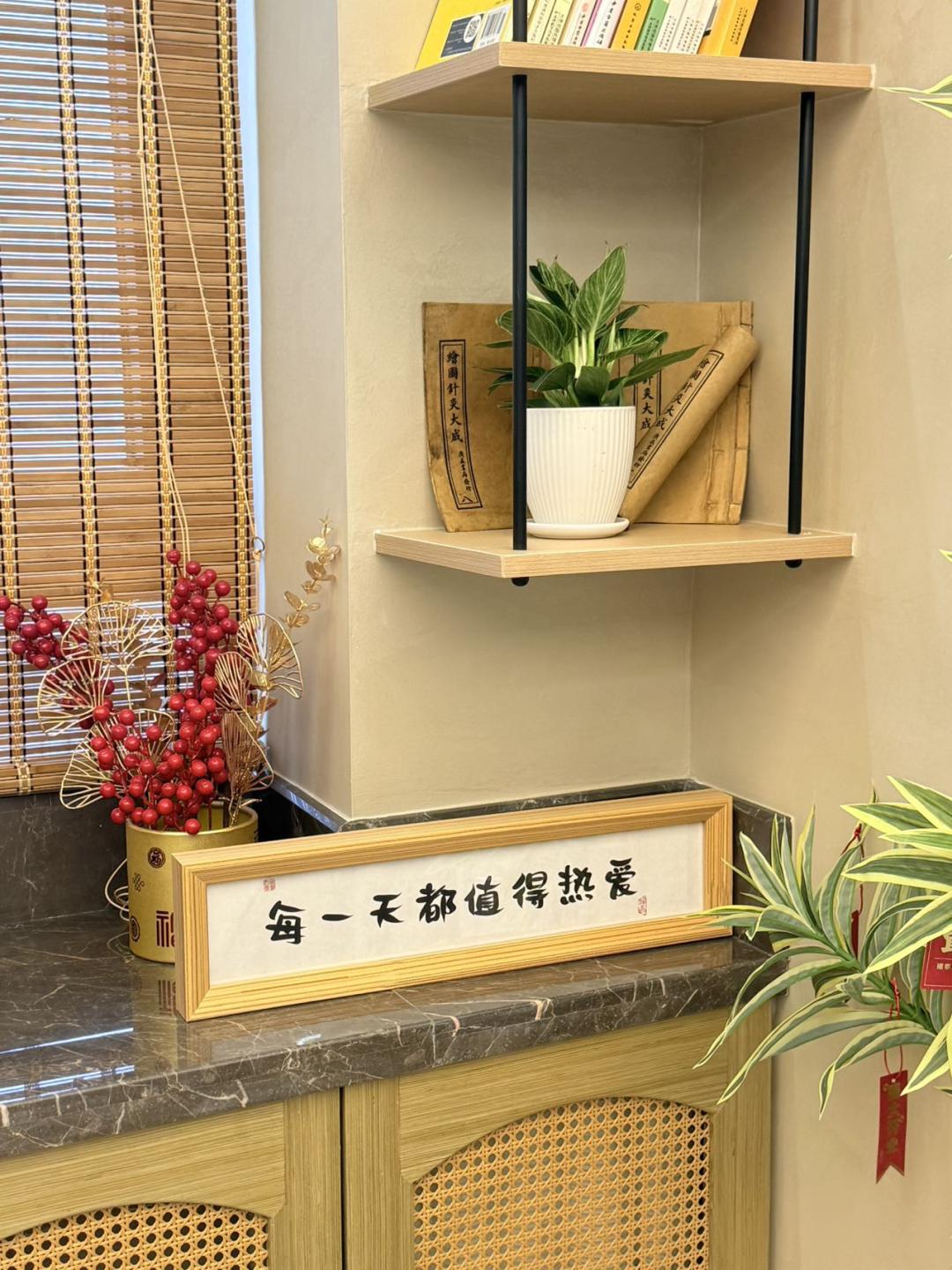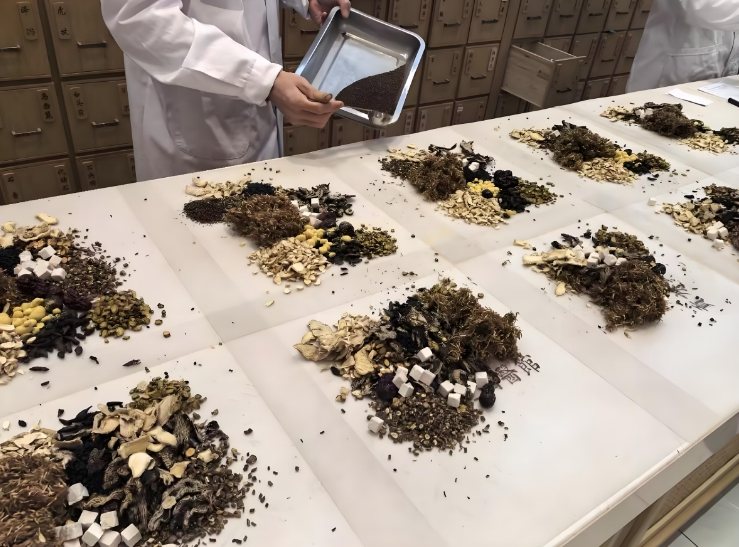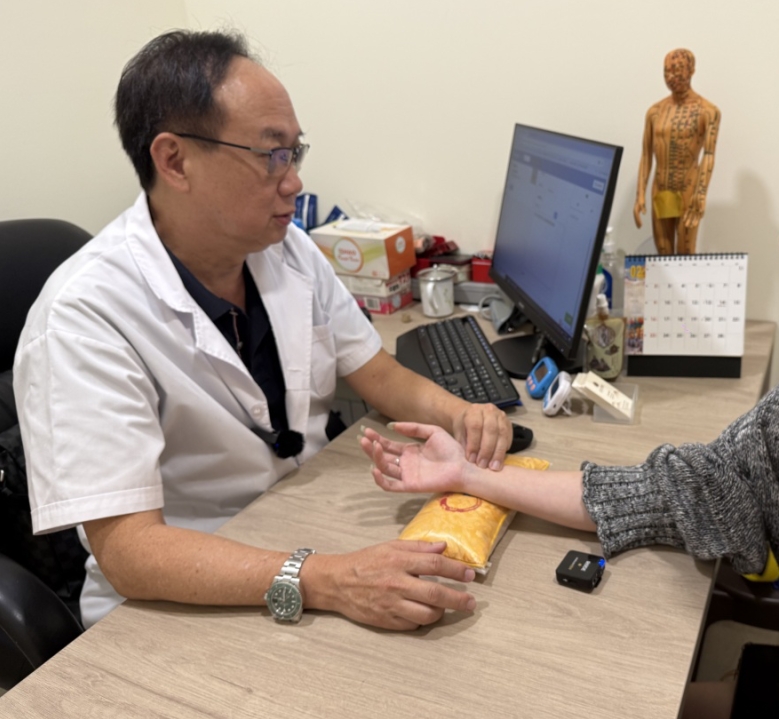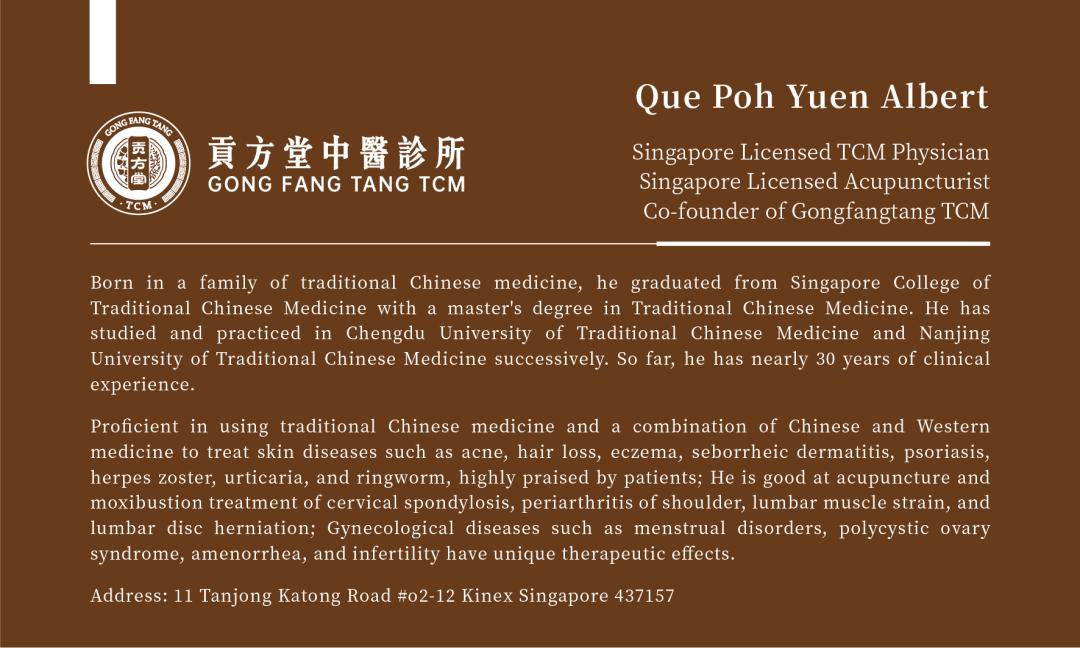- Physicians
- Clinics
- TCM
- Western GP
-
Fees
-
Deals & Privileges
- About & Resources
- Contact Us
With the popularization of CT screening, the detection rate of pulmonary nodules has surged. Although 90% are benign, the underlying worry about "precancerous lesions" lingers. When Western medicine suggests "periodic monitoring," TCM can take proactive action. What Chinese herbs are effective for dispersing nodules?

What causes pulmonary nodules?
Dr. Que Poh Yuen Albert, a TCM expert at Singapore Gong Fang Tang TCM Department, points out that pulmonary nodules are essentially pathological products formed by the deposition of phlegm, stasis, and toxins in the lung collaterals. Their modern high incidence is closely related to the intertwining of internal and external factors:
External Factors: Persistent Invasion of Environmental Toxins
Air Pollution Takes the Lead:
PM2.5, heavy metal particles (such as arsenic, cadmium) in industrial exhaust deposit in the lung collaterals, inducing chronic inflammation → fibrosis → nodule formation.
*Studies show: For every 10μg/m³ increase in PM2.5, the risk of pulmonary nodules rises by 30% (Environmental Health, 2023).*
Tobacco Exposure (Including Secondhand Smoke):
Over 4,000 chemicals like tar and nicotine directly damage alveolar epithelium, activating abnormal repair mechanisms.
Occupational Exposure Risks:
Teachers (chalk dust), miners (silica dust), chefs (cooking fumes), etc., who chronically inhale fine particles, are high-risk groups.
Internal Factors: Organ Dysfunction Brewing "Phlegm-Stasis"
Deficiency of Lung and Spleen is the Root:
Spleen deficiency → failure to transport fluids → accumulation of dampness into phlegm; Lung deficiency → impaired diffusion and descent → phlegm-turbidity stagnation.
Dr. Qiu emphasizes: "The spleen is the source of phlegm production, the lung is the container for storing phlegm. Nodules are essentially the tangible manifestation of 'phlegm-dampness and stasis binding together'."
Liver Qi Stagnation Accelerates Deterioration:
Chronic stress, anxiety → liver qi stagnation → qi stagnation and blood stasis → mutual binding of phlegm and stasis, leading to rapid nodule enlargement.
Insufficient Vital Qi (Zheng Qi), Toxins Accumulating Internally:
Staying up late, overwork deplete vital qi, weakening immune function → environmental toxins ("external toxins") and metabolic waste ("internal toxins") congeal into masses.
What are the symptoms of pulmonary nodules?
Dr. Que Poh Yuen Albert reminds that pulmonary nodules are often asymptomatic in the early stages. However, the appearance of the following manifestations demands high vigilance:
Persistent dry cough: Dry cough lasting >2 weeks without a cold, worsening at night (nodule irritating the trachea).
Blood-streaked sputum: Especially blood in the first sputum upon waking (rupture of surface blood vessels on the nodule).
Dull pain or tightness: Fixed location chest pain, more noticeable with deep breathing (pleural traction).
Increased fatigue: Difficult to relieve even with rest, easily breathless when climbing stairs (lung qi deficiency).
Dull skin, ecchymosis on the tongue: Brownish spots on the cheekbones, purple and thick sublingual veins (blood stasis pattern).
Copious, sticky phlegm: Coughing up grey-white sticky phlegm in the morning, sensation of a foreign object in the throat (internal accumulation of phlegm-dampness).
Depression/irritability: Often accompanied by distending pain in the hypochondrium, breast distension before menstruation (liver qi stagnation).

What Chinese herbs are effective for dispersing pulmonary nodules?
Among the various TCM formulas, Li Chong Tang (Regulating Chong Meridian Decoction) is one of the classic renowned formulas for treating abdominal masses and accumulations (including nodules, fibroids, lumps, etc. in modern medicine). In years of clinical practice, Dr. Que Poh Yuen Albert has deeply studied the essence of this formula. He flexibly modifies it according to the specific pathogenesis of pulmonary nodule formation (lung-spleen qi deficiency, phlegm-stasis obstructing the collaterals) and individual patient differences, achieving good results.
Li Chong Tang consists of Huang Qi (Astragalus), Dang Shen (Codonopsis), Bai Zhu (Atractylodes), Sheng Shan Yao (Raw Dioscorea), Tian Hua Fen (Trichosanthes Root), Zhi Mu (Anemarrhena), San Leng (Burreed Tuber), E Zhu (Zedoary), and Sheng Ji Nei Jin (Raw Chicken Gizzard Membrane).
Huang Qi, Dang Shen (or Ren Shen), Bai Zhu: Boost qi and fortify the spleen, protect the acquired foundation (spleen/stomach), cut off the source of phlegm production, enhance the body's vital qi and disease resistance.
Shan Yao (Dioscorea): Tonifies spleen, lung, and kidney; boosts qi and nourishes yin.
San Leng, E Zhu: Break blood stasis, move qi, disperse accumulations, relieve pain. These two herbs are essential for dispersing masses and accumulations, potent and effective, capable of effectively breaking down blood stasis accumulations. Dr. Qiu emphasizes the need to strictly grasp indications and dosage, often combining them with qi-boosting and supporting herbs to moderate their attacking nature.
Ji Nei Jin (Chicken Gizzard Membrane): Fortifies the spleen and promotes digestion, dispels stasis and disperses nodules, aids spleen-stomach transportation and transformation, and also transforms stasis in the channels and collaterals.
Tian Hua Fen (Trichosanthes Root): Clears heat, generates fluids, reduces swelling, and expels pus.
Zhi Mu (Anemarrhena): Clears heat and nourishes yin, preventing warm-drying herbs from injuring yin.
Subtle Modifications and Applications:
Strengthen phlegm-dispersion and nodule-softening: Often add Zhe Bei Mu (Fritillaria Thunbergii), Shan Ci Gu (Pseudobulbus Cremastrae), Xia Ku Cao (Prunella Spike), Hai Zao (Sargassum), Mu Li (Oyster Shell).
Enhance blood-activation and collateral-dredging: Add Dan Shen (Salvia), Dang Gui (Angelica), Tao Ren (Peach Seed), Hong Hua (Safflower), Di Long (Earthworm).
Diffuse lung qi and regulate qi: Add Jie Geng (Platycodon), Zhi Ke (Aurantii Fructus), Su Geng (Perilla Stem) to assist lung qi diffusion and descent.
Nourish yin and moisten the lung: For yin deficiency or chronic illness injuring yin, add Sha Shen (Glehnia/Adenophora), Mai Dong (Ophiopogon), Bai He (Lily Bulb).
Protect spleen and stomach: Always emphasize fortifying the spleen and harmonizing the stomach, often paired with Fu Ling (Poria), Chen Pi (Tangerine Peel), Sha Ren (Amomum).

Medical Case
Patient: Ms. Chen, 34 years old.
Chief Complaint: Chest CT during a company physical examination revealed a ground-glass opacity (GGO) nodule approximately 8mm in the right lower lung lobe. No smoking history, but high work stress, prone to fatigue, occasional mild dry cough, anxious mood. Western medicine recommended re-examination in 3 months.
Initial Consultation: Pallid complexion, spiritless and fatigued, shortness of breath and disinclination to speak, occasional dry cough without phlegm, average appetite, poor sleep, tongue pale-dark with toothmarks and a few ecchymotic spots at the edges, thin white slightly greasy coating, pulse thready and choppy.
Pattern Differentiation: Lung-spleen qi deficiency, phlegm-stasis obstructing the collaterals.
Treatment Principle: Boost qi and fortify the spleen, transform phlegm and dispel stasis, soften hardness and disperse nodules.
Formula: Modified Li Chong Tang.
Herbs: Sheng Huang Qi (Raw Astragalus) 30g, Dang Shen (Codonopsis) 15g, Chao Bai Zhu (Stir-fried Atractylodes) 12g, Shan Yao (Dioscorea) 15g (Boost qi, fortify spleen); San Leng (Burreed) 9g, E Zhu (Zedoary) 9g (Break blood, move qi, disperse accumulations); Sheng Ji Nei Jin (Raw Chicken Gizzard Membrane) 10g (Promote digestion, dispel stasis); Zhe Bei Mu (Thunberg Fritillary) 15g, Shan Ci Gu (Pseudobulbus Cremastrae) 10g, Sheng Mu Li (Raw Oyster Shell) 30g (decocted first) (Transform phlegm, soften hardness, disperse nodules); Dan Shen (Salvia) 15g, Dang Gui (Angelica) 10g (Activate blood, nourish blood); Jie Geng (Platycodon) 6g, Chen Pi (Tangerine Peel) 9g (Regulate qi, transform phlegm); Chao Suan Zao Ren (Stir-fried Ziziphus Seed) 15g (Calm spirit, aid sleep); Zhi Gan Cao (Honey-fried Licorice) 6g (Harmonize the herbs); 7 doses, one dose daily, taken morning and evening.
Second Consultation: After one week of taking the herbs, the patient felt improvement in spirit and energy, and better sleep. Subsequently, the prescription was slightly adjusted based on symptoms, e.g., adding Bei Sha Shen (Northern Glehnia) 12g and Mai Dong (Ophiopogon) 10g to moisten the lung when dry cough was prominent.
